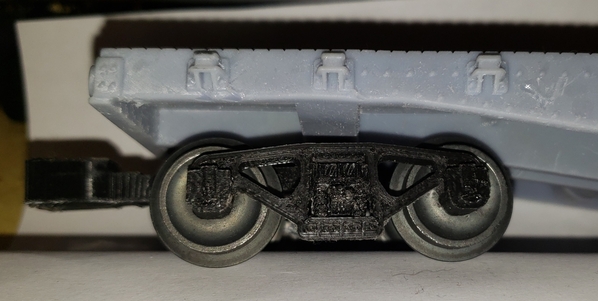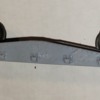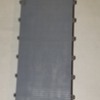You'll get rich as everyone adds their 2 cents to this topic. So here's another 2 cents.
We have both filament and resin printers, 4 and 7, respectively. Their capabilities and initial cost range from a couple hundred dollars to a thousand. The first printer was a Dremel 3D45 filament printer (intended for classroom use) and is bulletproof. But would be consider expensive today for what you get. The next was an entry-level, small format Anycubic resin printer. Together they produced this.

The barrels and flat cars were printed in multiple pieces on the Dremel while the clamps (light gray) were printed in resin for the detail. The barrels were printed in three parts that slip together. The flat cars is two pieces bolted together. The original unmodified STL file was created by Paul Hofecker (Professorburnout).
It should be noted that there are two types of resin printer; SLA and MSLA. SLA (stereolithography) uses a scanning UV laser to expose the resin while a MSLA (masked) uses a LCD screen (think TV) to block UV light from reaching and exposing the resin. Cost is the big factor here. SLA (like the FormLab printer Alan uses) is initially much more expensive than an MSLA. I don't know the maintenance costs of the laser and scanning mechanisms of SLA,, but MSLA will eventually require replacement of the LCD screen. SLA printers are about an order-of-magnitude more expensive than an MSLA. For a hobbyist, an MSLA printer is probably the better choice.
The flatcar has since been printed as a single piece on a Elegoo Saturn resin printer. It has a larger print area, but the model still had to be inclined to fit.


Neither resin or filament printers can print overhangs without supports like shown here without supports. My experience gives the advantage to resin with the ease of removal of the supports and and their impact on the finish impact of the model. The dangers of resin have already been state by others, and I'll reinforce it.
The time it takes to print a model varies between the two technologies. The volume of the model determines how long it takes a filament printer to print while the height determines it for the MSLA resin printer. The reason is the filament printer must trace out each voxel in each layer to deposit the plastic while the inexpensive MSLA printer prints an entire layer in one shot. As an illustration, if you double the size of a model the time it takes a filament printer to pint goes up by a factor of eight while the MSLA print the time only doubles. The SLA printer falls in between.
Resin printers have much better resolution than filament printers. My Mars has a layer thickness and pixel width of 0.01 mm and 0.035 mm respectively. My Neptune has about 0.1 mm layer height(or larger) and a rough pixel size equal to the nozzle diameter (0.2 to 1.0 mm with 0.4 mm typical). The finish on a resin print is smoother than one printed in filament. Filament prints usually require some sanding/filling to get a smooth surface. Resin prints can have the same problem, but with their higher resolution and anti-aliasing will minimize it. Proper orientation can reduce the issue for both. Resolution is the biggest factor here.
There are two oblivious printer specification two consider when you are buying a printer, resolution (resin) and print volume (filament). The former is driven by the quality that you desire and the latter is driven by the size. Both have been mentioned by other posters. Both drive the price of the hardware.
Material costs are not really a factor in choosing a printer technology. Excluding propriety products the cost per kilogram of resin and filament of essentially the same, $30/kg. You will pay more for products that have special properties: strength, coloring, flexibility, and transparency.
Buying a printer is only solves half the problem of making models. The other half is buying/designing the model and converting it to a printable form. The latter involves the slicing of the model using software (basic version of a commercial package) provided by the printer maker. Pre-built models are available free or for purchase at several on-line sites including OGR Forum. All have some restriction on their use. However, if you must design your own models you;ll need to learn some sort of CAD (computer-aided design) software. You'll find that there are plenty out there to choose, From very simple (Onshape and free) to professional (some have limited versions for free). I use FreeCAD because it is free, and I didn't know enough of what was available. FreeCAD has a learning curve, but the right YouTube channel will help a lot. If you are interested in Onshape check out Teaching Tech on YouTube.
The internet is the source of information whether it be in print or video. There are several YouTubers that you'll consistently go to. Numerous Forumites have been commenting on their experiences with making 3D models. So checkout their posts.
My recommendation for a small resin printer is the Elegoo Mars 3. I don't really have one for a filament printer (I have a Elegoo Neptune 3) but choose one with auto bed leveling.
Both resin and filament have a place in model railroading.
Jan
Edited 3/5/22
























